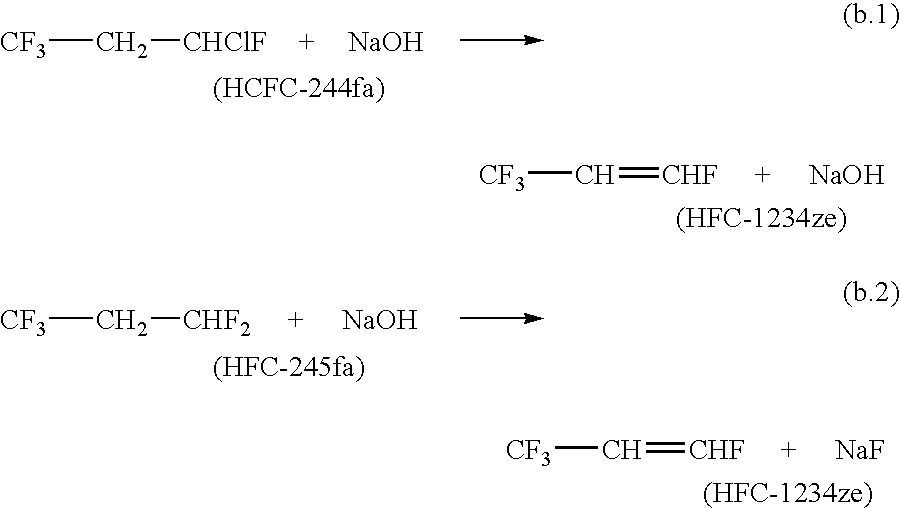Process for the manufacture of 1,3,3,3-tetrafluoropropene
a technology of tetrafluoropropene and tetrafluoropropene, which is applied in the preparation of halogenated hydrocarbons, physical/chemical process catalysts, hydrogen halide split-off, etc., can solve the problems of not being economical relative to the product yield of known processes, and certain chlorofluorocarbons might be detrimental to the earth's ozone layer
- Summary
- Abstract
- Description
- Claims
- Application Information
AI Technical Summary
Benefits of technology
Problems solved by technology
Method used
Image
Examples
examples 1-18
[0024] The fluorination reaction was conducted in a 2.54 cm diameter, 81 cm long Monel® reactor. The reactor was heated with an electric furnace. The reactants of HCFC-1233zd (>99.9% purity), anhydrous HF and, optionally, chlorine, were fed to the reactor at constant flow rates. The flow rate of the chlorine was measured using a Hasting mass flow meter and controller. The flow rate for the reactants, HCFC-1233zd and HF, were controlled and measured by Honeywell PlantScape DCS (Distributive Control System) and confirmed by the weight change in the respective source cylinders.
[0025] The reactor output was sampled directly into an in-line GC, i.e. a Perkin Elmer 8500 gas chromatograph, using a Fluorocol column and FID detector, so that the amounts of organic species exiting the reactor could be determined during the operation of the process.
[0026] The reaction conditions for Examples 1-18 and corresponding experimental results are listed below in Tables 1 and 2, respectively. Contact...
example 19
[0035] A starting material consisting of 91.5 GC area % 1,1,1,3,3-pentafluoropropane (HFC-245fa) and 0.0121 GC area % HFC-1234ze was bubbled through a 2.0 wt % potassium hydroxide (KOH) solution. The organic mixture resulting from the combination was collected and analyzed by GC equipped with a FID. The mixture contained 15.455 GC area % HFC-1234ze.
example 20
[0036] To a reaction setup consisting of a 3-neck round bottom flask (5 L), mechanical agitator, reflux condenser, and low temperature cold trap was added to 3000 ml acetonitrile and 9.9 moles (504 g) of KOH pellets. After mixing, 5.1 moles (684 g) of 80 GC area % HFC-245fa / 20 GC area % HCFC-1233zd was added through a dip leg. The reagents were heated slowly with vigorous agitation. Reaction was observed at about 60° C. The crude product was collected in the cold finger. The crude material was analyzed by GC and consisted of about 62.0 GC area % HFC-1234, 20.9 GC area % HFC-245fa, and 16.2 GC area % HCFC-1233zd.
PUM
| Property | Measurement | Unit |
|---|---|---|
| Temperature | aaaaa | aaaaa |
| Temperature | aaaaa | aaaaa |
| Temperature | aaaaa | aaaaa |
Abstract
Description
Claims
Application Information
 Login to View More
Login to View More - R&D
- Intellectual Property
- Life Sciences
- Materials
- Tech Scout
- Unparalleled Data Quality
- Higher Quality Content
- 60% Fewer Hallucinations
Browse by: Latest US Patents, China's latest patents, Technical Efficacy Thesaurus, Application Domain, Technology Topic, Popular Technical Reports.
© 2025 PatSnap. All rights reserved.Legal|Privacy policy|Modern Slavery Act Transparency Statement|Sitemap|About US| Contact US: help@patsnap.com


